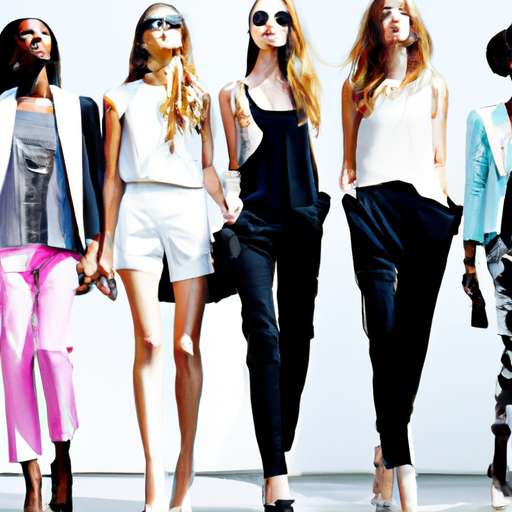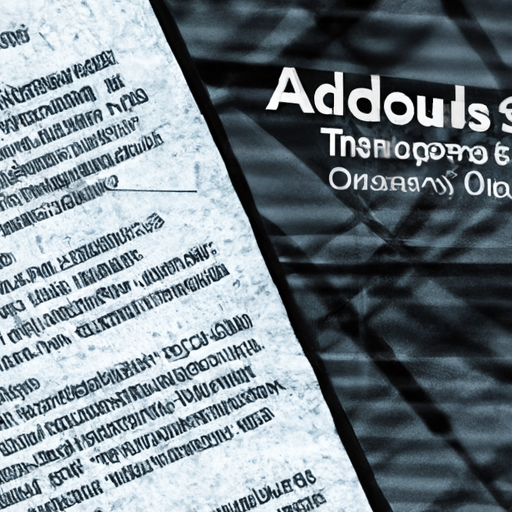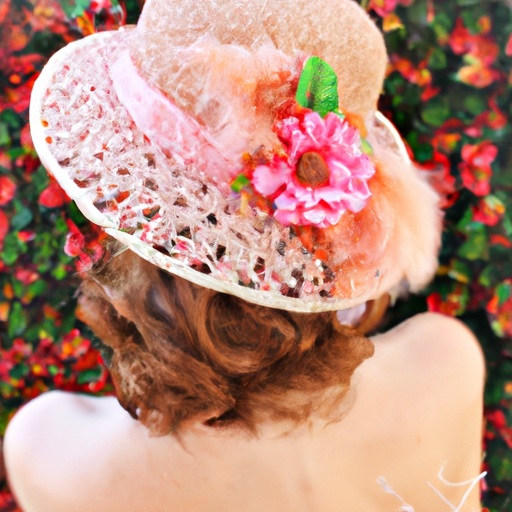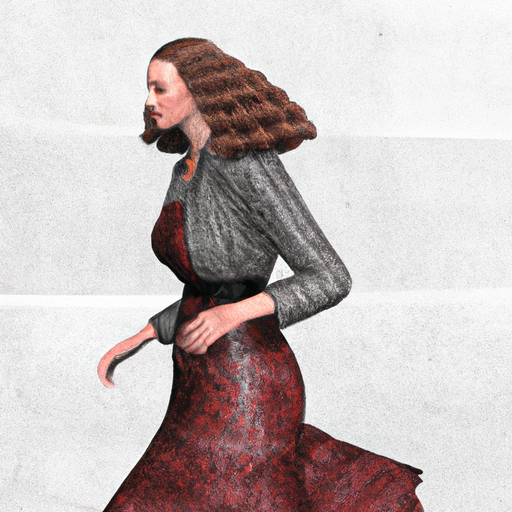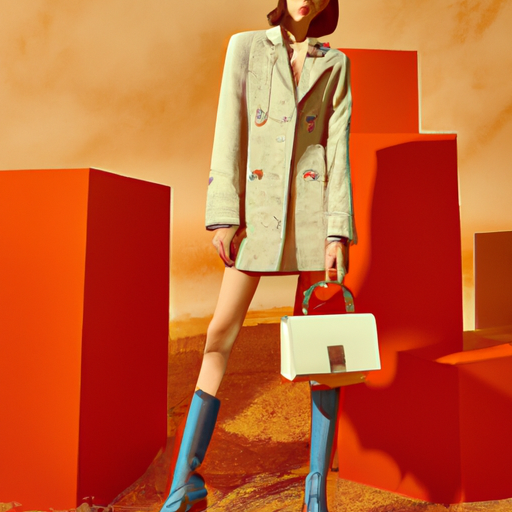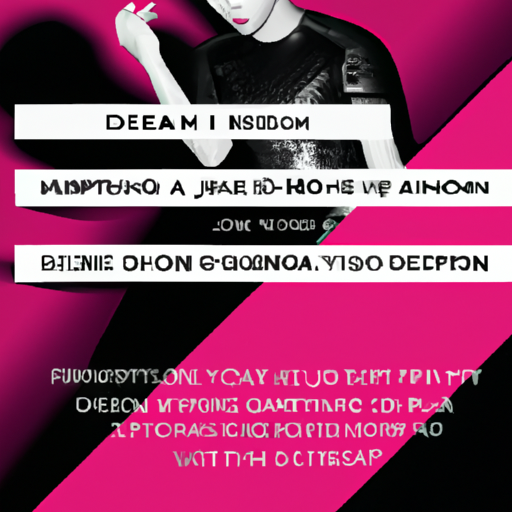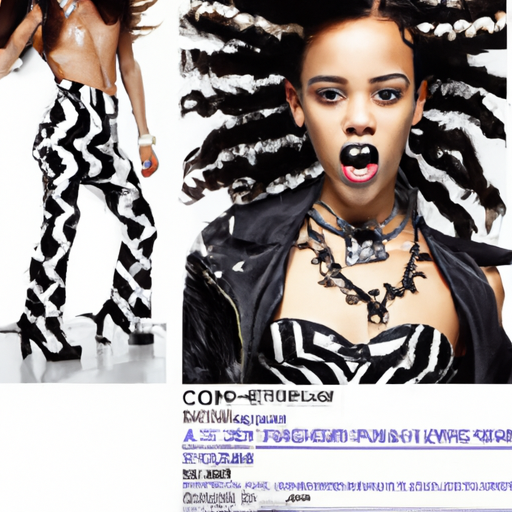Which Group Sets Fashion Trends?
Milan Fashion Week is synonymous with Italian fashiontrendy and fashionable? In a world where fashion is constantly evolving, it’s fascinating to ponder which group holds the reins. Is it the influential celebrities who grace red carpets and grace magazine covers? Or perhaps it’s the innovative designers who push the boundaries and create groundbreaking collections? In this article, we explore the elusive question of who really sets the fashion trends that captivate our attention and shape our wardrobes. Get ready to uncover the invisible forces that drive the ever-changing world of fashion.
Table of Contents
Demographics
Gender
When it comes to setting fashion trends, both men and women have a significant impact. The fashion industry recognizes the power of gender in shaping trends and caters to the diverse preferences of each group. In recent years, we have seen a rise in gender-neutral fashion, with brands and designers embracing fluidity and inclusivity. This shift has allowed individuals to express themselves freely, regardless of traditional gender norms.
Age
Fashion trends are not limited to a specific age group; they resonate with people of all ages. While young adults and millennials often push the boundaries of style, the influence of older generations cannot be overlooked. From fashion-forward teenagers to sophisticated seniors, diverse age groups contribute to shaping trends. Fashion has the power to bridge generational gaps and create a sense of unity among individuals of different ages.
Socioeconomic status
The influence of socioeconomic status on fashion trends cannot be underestimated. While luxury brands may dominate the runways and set the tone for high-end fashion, the rise of fast fashion and affordable alternatives has democratized style. Individuals from different socioeconomic backgrounds have access to a wide range of fashion choices, allowing them to shape their personal style and contribute to the overall fashion landscape. Fashion trends are no longer exclusive to those with high purchasing power; they are now accessible to a broader audience.
Influential Figures
Celebrities
Celebrities play a significant role in setting fashion trends. Their influential status, widespread media exposure, and dedicated fan base make them the ideal trendsetters. Whether it’s a red carpet appearance or a casual street style look, celebrities have the power to make or break trends. Fashion designers often collaborate with celebrities, creating exclusive collections or inviting them to sit front row at fashion shows. Celebrities are not only consumers of fashion but also shape public opinion and inspire millions with their unique sense of style.
Fashion Designers
Fashion designers are the driving force behind fashion trends. They are the creative minds who conceptualize and bring new styles to life. From avant-garde designers who challenge societal norms to commercial brands that cater to the masses, fashion designers have the power to shape the industry. Their collections influence not only the runway but also trickle down to mainstream fashion. The vision and creativity of fashion designers set the tone for each season, dictating the colors, silhouettes, and fabrics that will dominate the fashion landscape.
Fashion Editors
Fashion editors are the gatekeepers of the fashion industry. They have the power to curate and showcase trends through their influential platforms. Through fashion magazines and online publications, they provide a curated perspective on what’s in vogue. Fashion editors attend fashion shows, review collections, and present their selections to the public. Their knowledge and expertise in understanding consumer preferences and market demands make them instrumental in setting fashion trends. Their guidance and recommendations shape the choices of many fashion enthusiasts.
Mass Media
Magazines
Fashion magazines have long been at the forefront of setting fashion trends. Glossy pages filled with fashion editorials, style guides, and trend reports educate and inspire readers. With well-known publications such as Vogue, Harper’s Bazaar, and Elle, the fashion industry relies on magazines as a platform to introduce new trends and showcase the work of designers. These magazines reach a broad audience and provide an in-depth understanding of the latest fashion developments.
Fashion Blogs
The rise of digital media has given birth to fashion blogs, where influencers and fashion enthusiasts share their personal style, insights, and trend forecasts. Fashion bloggers provide a more relatable perspective on fashion, appealing to a younger and more diverse audience. Through their blogs and social media platforms, they offer fashion advice, style inspiration, and updates on the latest trends. Fashion blogs have become a powerful tool in shaping fashion choices, as they bridge the gap between industry experts and everyday consumers.
Social Media
In today’s digital age, social media platforms such as Instagram, TikTok, and YouTube have revolutionized the way fashion trends are set. Influencers, celebrities, and fashion brands utilize these platforms to showcase their personal style, collaborate with designers, and share their opinions on fashion. Social media allows for immediate and direct interaction between fashion influencers and their followers, creating a dynamic and inclusive space for trend-setting. The viral nature of social media can lead to trends spreading like wildfire, reaching a global audience in a matter of hours.
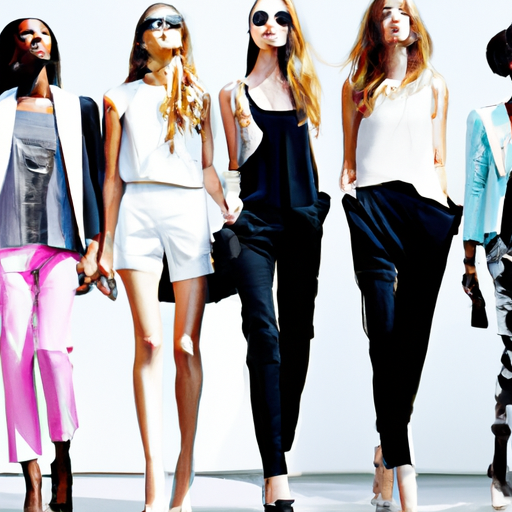
Subcultures
Hipsters
Hipsters are known for their individualistic and non-mainstream style. They often embrace vintage clothing, ironic accessories, and alternative fashion choices. Hipsters are trendsetters in their own right, as they are constantly seeking unique and original pieces that defy mainstream fashion. Their influence can be seen in the rise of vintage-inspired fashion, sustainable clothing brands, and the revival of retro aesthetics.
Goths
The goth subculture is known for its dark and dramatic fashion choices. Goths embrace black clothing, bold makeup, and accessories that reflect a sense of individuality and rebellion. The goth subculture sets trends that defy traditional notions of beauty and challenge societal norms. Gothic fashion has been influential in the mainstream fashion industry, inspiring designers to incorporate darker elements into their collections and creating a niche market for alternative styles.
Punks
Punk fashion is characterized by its rebellious and DIY ethos. Punks often wear ripped clothing, band t-shirts, leather jackets, and sporting vibrant colored hair. The punk subculture sets trends that embody a sense of non-conformity and anti-establishment. Punk fashion has influenced mainstream fashion through its edgy and bold aesthetics, inspiring designers to incorporate punk-inspired elements into their collections.
Fashion Weeks
Paris Fashion Week
Paris Fashion Week is regarded as one of the most prestigious fashion events globally. It sets the tone for high fashion, with renowned designers showcasing their collections on the runway. Paris Fashion Week attracts industry professionals, celebrities, and fashion enthusiasts from around the world, creating a platform for trend-setting. The designs presented during Paris Fashion Week often dictate the direction of fashion for the upcoming season, influencing both luxury brands and high street retailers.
Milan Fashion Week
Milan Fashion Week is synonymous with Italian fashion and luxury. It showcases the craftsmanship, elegance, and glamour that Italy is known for in the fashion industry. Milan Fashion Week sets trends in luxury and showcases collections from iconic designers and iconic fashion houses. Italian fashion is synonymous with quality and timeless style, and the trends set during Milan Fashion Week have a lasting impact on the industry.
New York Fashion Week
New York Fashion Week is one of the most prominent fashion events in the world. It brings together emerging designers, established brands, and industry insiders to showcase their collections. New York Fashion Week sets trends that cater to a diverse and urban audience. Known for its commercial viability, New York Fashion Week often showcases wearable and accessible fashion that influences the mass market. The trends set during this event reflect the vibrant and ever-evolving nature of American fashion.
Retailers
High-end boutiques
High-end boutiques are instrumental in setting fashion trends. They often carry designer collections and cater to an affluent clientele. High-end boutiques provide a platform for emerging designers, allowing them to showcase their work and gain recognition. They curate collections based on current fashion trends and consumer demand, influencing the choices of fashion enthusiasts. The personalized shopping experience offered by high-end boutiques adds to their appeal and makes them trend-setters in the world of luxury fashion.
Fast fashion brands
Fast fashion brands excel at capitalizing on the latest trends and making them accessible to a broader audience. They offer affordable alternatives to designer fashion, quickly producing and distributing garments inspired by runway trends. Fast fashion brands have a global reach, making them influential in shaping fashion choices among a diverse consumer base. Their ability to adapt and produce new styles at a rapid pace sets the tone for the fast-paced nature of the fashion industry.
Department stores
Department stores have long been influential in setting fashion trends. They offer a wide range of brands and cater to a diverse demographic. Department stores curate collections based on current fashion trends, providing customers with an extensive selection of clothing and accessories. Their ability to bring together various designers and brands allows them to shape trends that appeal to a broad audience. Department stores often host fashion shows, collaborate with designers, and provide a platform for emerging talent, solidifying their role as trend-setters.
Street Style
Fashion influencers
Fashion influencers play a pivotal role in shaping street style trends. Their unique sense of style and large following enable them to influence fashion choices on a global scale. Fashion influencers share their outfits, style tips, and wardrobe essentials with their followers, creating a ripple effect in the fashion community. Their ability to merge high-end designer pieces with affordable fashion makes their style relatable and attainable. Fashion influencers reflect the democratization of fashion, as their influence goes beyond traditional industry insiders.
Photographers
Street style photographers capture the fashion moments seen in everyday life. They document the unique outfits and creative combinations worn by individuals on the streets of fashion capitals. These photographs provide inspiration to fashion enthusiasts and help shape street style trends. Street style photographers are often sought after by fashion publications and brands to capture the essence of trends and document the fashion scene. Their images serve as a visual archive of the evolving fashion landscape.
Fashion capitals
Fashion capitals such as New York, Paris, London, and Milan set the stage for street style trends. The bustling streets of these cities become a runway for individuals to showcase their personal style. The diverse cultural influences, iconic landmarks, and vibrant fashion scene make these cities hotbeds for trend-setting. Fashion capitals attract fashion enthusiasts, industry professionals, and influencers, creating a melting pot of unique fashion expressions. The street style captured in these cities often sets the tone for global fashion trends.
Fashion Forecasting
Trend agencies
Trend agencies play a crucial role in setting fashion trends. They specialize in forecasting future fashion movements, analyzing consumer behavior, and identifying emerging trends. Trend agencies conduct extensive research, analyzing data and market trends to provide valuable insights to designers, retailers, and brands. Their reports shape the collections of fashion designers and influence buying decisions in the retail industry. By understanding consumer preferences, trend agencies anticipate the styles that will make an impact in the fashion industry.
Fashion analysts
Fashion analysts interpret market data and industry trends to provide strategic advice. They analyze consumer behavior, sales figures, and global fashion trends to guide brands and retailers in making informed decisions. Fashion analysts assess the impact of cultural, economic, and social factors on fashion trends, preparing forecasts that help shape the direction of the industry. Their expertise allows them to identify patterns and anticipate shifts in consumer preferences, ensuring that fashion brands stay ahead of the curve.
Consumer research
Consumer research is vital in understanding fashion trends and the preferences of target audiences. Surveys, focus groups, and data analysis provide valuable insights into consumers’ purchasing behaviors, style preferences, and brand loyalty. Fashion brands invest in consumer research to identify trends and ensure that they are meeting the expectations of their target market. By staying connected to consumer sentiment, brands can tailor their collections and marketing strategies to align with current trends and consumer demands.
Fashion Institutions
Fashion schools
Fashion schools play a pivotal role in shaping the future of fashion. They provide education and training to aspiring fashion designers, stylists, and industry professionals. Fashion schools nurture creativity, teach technical skills, and encourage critical thinking, preparing students to become the trendsetters of tomorrow. Schools such as Central Saint Martins in London, Parsons School of Design in New York, and Institut Français de la Mode in Paris have produced some of the most influential figures in the fashion industry.
Fashion museums
Fashion museums preserve the rich history and cultural significance of fashion. They showcase exhibitions that highlight iconic designs, innovative techniques, and influential fashion movements. Fashion museums play a pivotal role in educating the public about the evolution of fashion and its impact on society. Exhibitions curated by fashion museums often inspire designers and provide a source of inspiration for future trends.
Industry organizations
Industry organizations, such as the Council of Fashion Designers of America (CFDA) and the British Fashion Council (BFC), guide and support the fashion industry. These organizations play a crucial role in recognizing and promoting talent, organizing fashion events, and influencing policy decisions that impact the industry. They provide a platform for designers to showcase their work, collaborate with brands, and connect with industry professionals. Industry organizations bridge the gap between fashion education and the business side of the industry, ensuring a cohesive and collaborative environment for trend-setting.
Cultural Influences
Ethnic traditions
Ethnic traditions and cultural influences play a significant role in shaping fashion trends. Traditional clothing, textiles, and craftsmanship from various cultures inspire designers to incorporate diverse elements into their collections. From vibrant African prints to intricate Indian embroidery, ethnic traditions provide a rich source of inspiration for fashion designers. The appreciation and incorporation of these cultural influences promote inclusivity and celebrate the diversity of global fashion.
Music and subcultures
Music and subcultures have always had a profound influence on fashion trends. From rock ‘n’ roll to hip-hop, different music genres have inspired unique fashion movements. Subcultures such as the mod, punk, and grunge scenes have left an indelible mark on fashion history. The rebellious spirit, distinctive style, and iconic figures associated with these subcultures have inspired designers and influenced mainstream fashion trends. The symbiotic relationship between music and fashion continues to shape trends and push boundaries.
Historical events
Historical events can have a lasting impact on fashion trends. Sociopolitical movements, economic shifts, and cultural revolutions contribute to changes in fashion. For example, the 1960s saw the rise of mod fashion and the miniskirt, influenced by the cultural and social changes of the time. The 1980s saw a fashion revolution inspired by the rise of feminism and the empowerment of women. These historical events and their associated fashion movements reflect the close connection between society, history, and fashion trends.
In conclusion, fashion trends are shaped by a wide range of factors, from influential figures such as celebrities and fashion designers to channels of mass media like magazines and social media. Diversity in demographics, subcultures, and cultural influences adds to the richness of the fashion landscape. Retailers, street style, fashion forecasting, fashion institutions, and historical events also influence fashion trends, ensuring a dynamic and ever-evolving industry. The constantly changing nature of fashion ensures that trends are not dictated by a single group but rather arise from a complex interplay of influences in a diverse and interconnected world.
